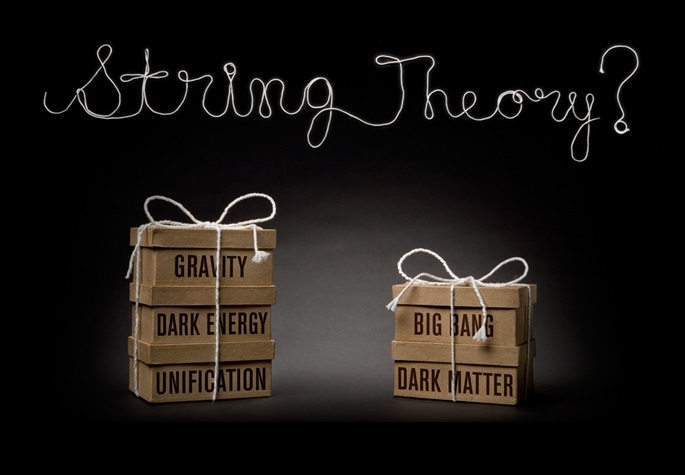

Stop. Look around. All things, visible or not, are made of particles so tiny that many find their sizes difficult to comprehend. Far removed from our everyday experiences, they move at rapid speeds and can only be observed with some of the most powerful technology known to science.
They are atoms.
Most people have at least heard of atoms, and many know that they are made of a nucleus containing protons (positively charged) and neutrons (no charge). Surrounding the nucleus is the electron cloud, containing negatively charged electrons. However, these subatomic particles are not the smallest constituents of matter.
For instance, protons and neutrons are made of particles known as quarks. If we were to zoom in and dissect these tiny particles, which make up all matter in our universe, many believe that we would eventually come to something surprisingly, perhaps even charmingly familiar– a string.

This is the fundamental idea of superstring theory (“string theory” for short)– that the electrons and quarks that make up all the matter in our universe are not zero-dimensional objects, but one-dimensional strings. These strings oscillate, giving the aforementioned particles their charge, mass, spin, and flavor. Just as the different vibrations from a guitar string produce different frequencies of pitch, different oscillations of superstrings produce different qualities for subatomic particles.
Beneath the poetic overview of string theory lies the use of the most advanced mathematics in the world. Those who wish to pursue studying string theory must first study calculus (single and multivariable), analytic geometry, trigonometry, partial differential equations, probability and statistics, and the list keeps growing. Despite the complexity, string theory has proven to be mathematically consistent when tested. Because of this consistency, string theory is a primary contender for the Theory of Everything or M Theory- a theory long sought after by Albert Einstein himself- which explains all known physical phenomena in the universe and could predict the outcome of all experiments that could be carried out in theory. If string theory proves to be accurate, we will be able to explain all known physical events in our universe– from the generation of the tiniest subatomic particles to the events that take place in the abyssal of black holes.
Alongside string theory’s explanation of the generation of subatomic particles is another idea often found in science-fiction novels: the concept of extra dimensions. The idea may sound crazy at first, as do many scientific theories in their early years, but the mathematics behind these other dimensions has proven to be true thus far. We live in a three-dimensional universe (four if we include the dimension of time). However, string theory proposes that there are a total ten different dimensions (11 total, including time). As far-fetched as this may seem at first, the mathematical tests that have been done show this to be true. If this were not the case, string theory would have been abandoned long ago, for the idea of a multidimensional universe is necessary for string theory to be accurate. One other thing that String Theory does is predict gravity. In other theories, gravity is a “given.”
String theory may seem complicated– that is to be expected from a theory that attempts to describe all known physical occurrences in our universe. However, there are those who strive to bring String Theory to those who aren’t necessarily the most scientifically literate or mathematically inclined. Physicists Michio Kaku, co-creator of string field theory, and Brian Greene (author of “The Elegant Universe,”) are both leading theoretical physicists who partake in the development of string theory. They are both popularizers of science, and aim to describe string theory in simpler terms for those who wish to understand the inner workings of our universe; without having to endure the years (and the price) of schooling required to perform the mathematics behind the theory.
Kaku and Greene do more than simply explain to us the ways of string theory, along with other complexities in our world. They show us a beautiful lesson that can be applied to all aspects of life. No matter how daunting a situation may be, no matter how absolutely complex an idea, one can almost always travel to the core to find a beautifully simple solution. And sometimes, if one looks deep enough, the solution may be as simple and as elegant as a string.